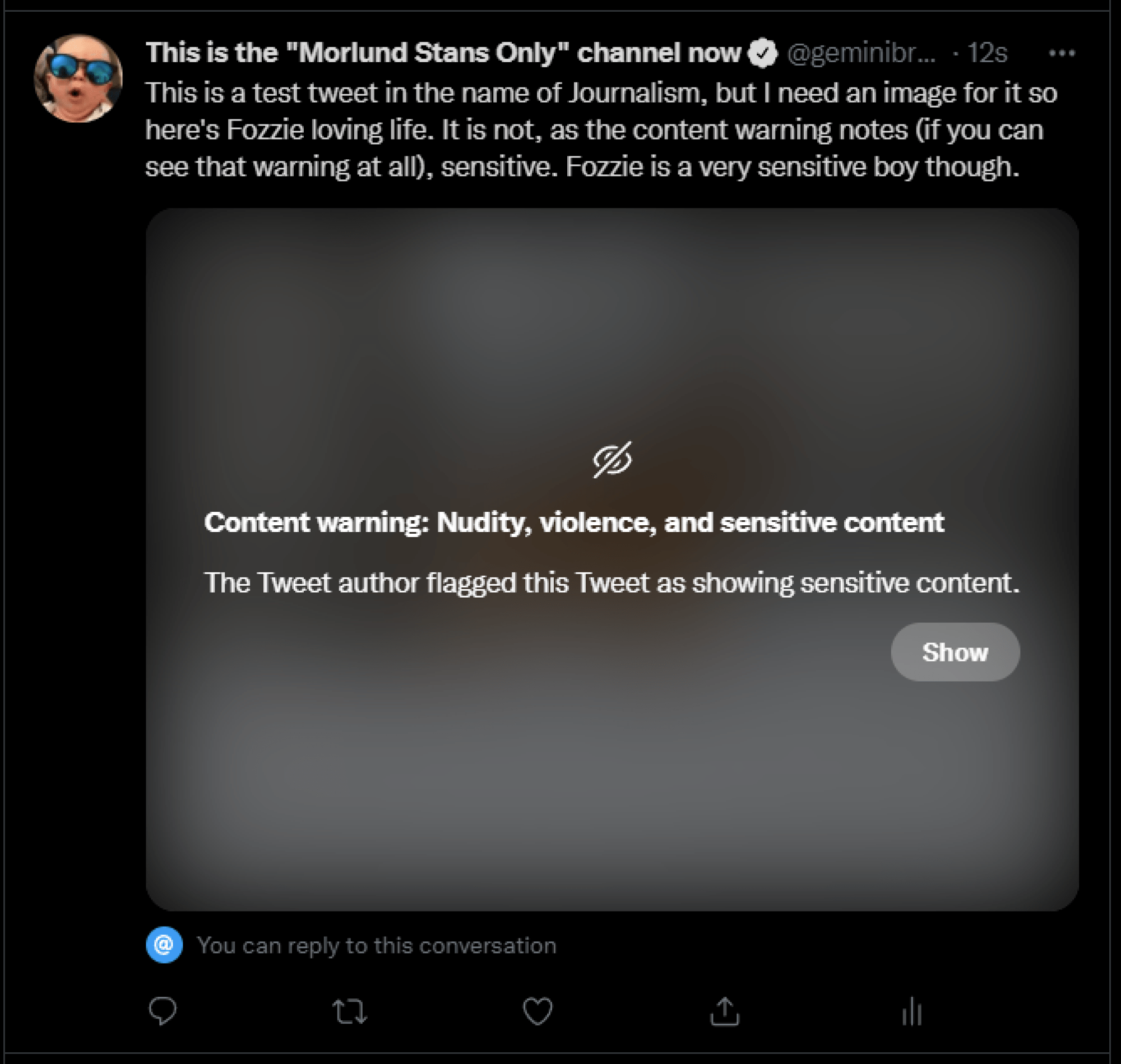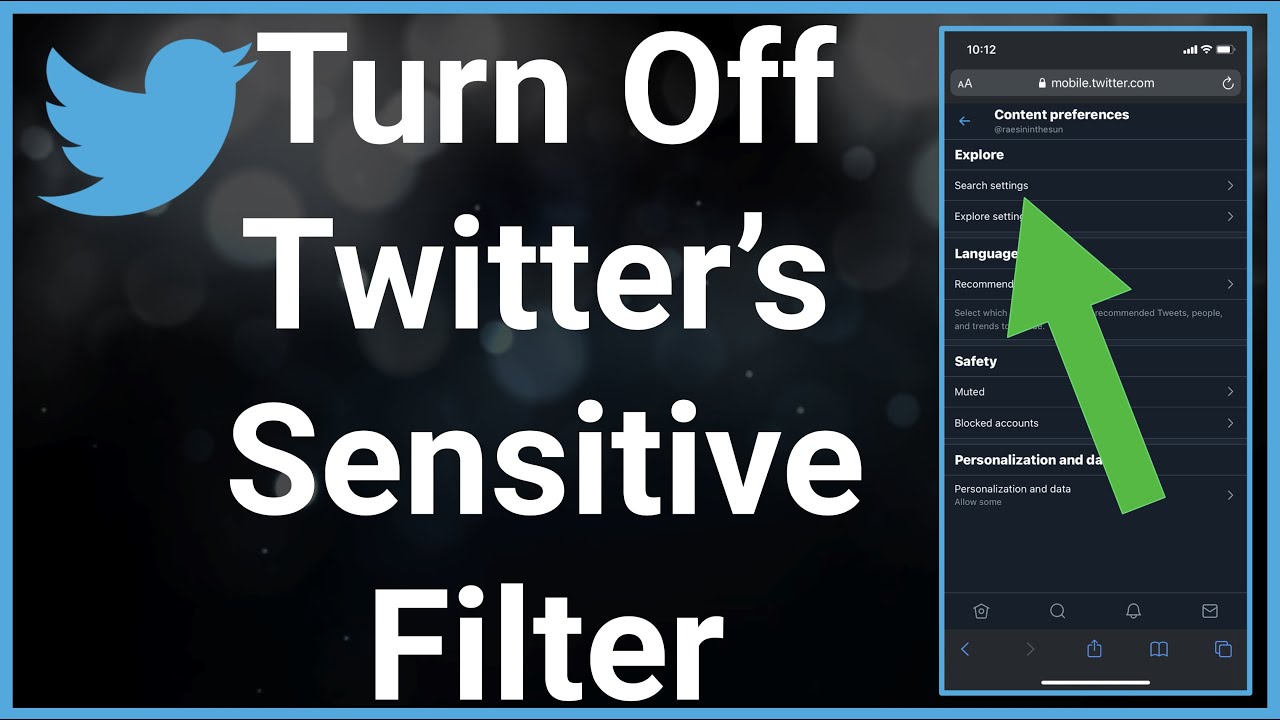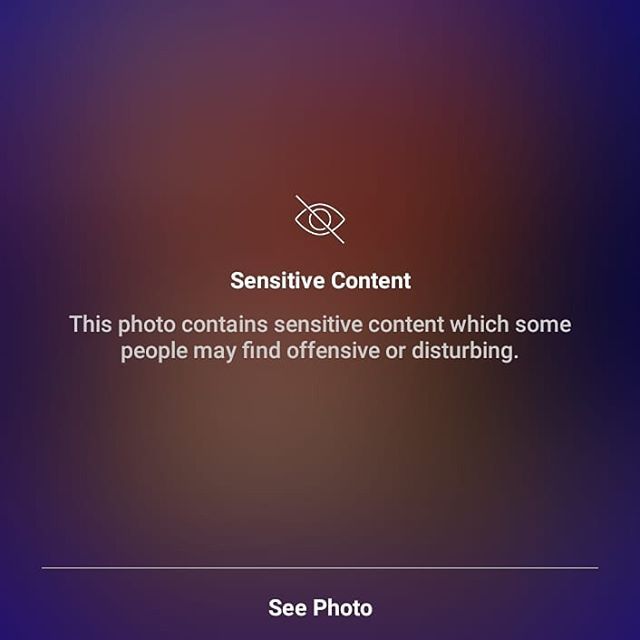Why Can't I View Sensitive Content On Twitter
"Why can't I view sensitive content on Twitter?" refers to the platform's restriction on displaying potentially sensitive content, such as violence, nudity, or graphic imagery, to protect users from disturbing or harmful material.
Twitter's policy on sensitive content aims to balance freedom of expression with user safety and well-being. By default, users must manually opt in to view sensitive content by adjusting their settings. This measure helps prevent accidental exposure to potentially upsetting content, particularly for younger or more sensitive users.
To view sensitive content on Twitter, users can enable the "Display sensitive content" option in their account settings. It's important to note that sensitive content may still be flagged with a warning label or hidden behind a click-through prompt to ensure users are aware of its potentially disturbing nature.
Why Can't I View Sensitive Content on Twitter?
Twitter restricts the display of sensitive content to protect users from disturbing or harmful material. Users must manually opt in to view such content, which may include violence, nudity, or graphic imagery.
- Protection: Sensitive content filters safeguard users from potentially upsetting or traumatic material.
- Privacy: Users have control over the content they encounter, respecting their privacy preferences.
- Well-being: Twitter prioritizes user well-being by limiting exposure to harmful content.
- Discretion: Sensitive content warnings and click-through prompts provide users with discretion over their exposure.
- Context: Flagged content helps users understand the potentially disturbing nature of the material.
- Balance: Twitter strives to balance freedom of expression with user safety and well-being.
In conclusion, Twitter's restrictions on sensitive content aim to protect users from harmful material while respecting their right to access information. By providing users with control over their content exposure, Twitter promotes a safe and supportive online environment.
Protection
The connection between "Protection: Sensitive content filters safeguard users from potentially upsetting or traumatic material" and "why can't I view sensitive content on Twitter" lies in Twitter's commitment to user safety and well-being. Sensitive content filters act as a protective measure, preventing users from encountering disturbing or harmful material that could negatively impact their emotional or psychological state.
Twitter's platform is vast and diverse, with users from all walks of life. Some users may be more sensitive to certain types of content, such as violence, gore, or nudity. By implementing sensitive content filters, Twitter ensures that users have control over the content they engage with, protecting them from potentially traumatic or triggering experiences.
For example, a user who has experienced trauma related to violence may find it upsetting to encounter graphic images or videos depicting violence. Sensitive content filters help prevent such users from being exposed to this type of content, allowing them to use Twitter without fear of triggering their trauma.
In conclusion, sensitive content filters are an essential component of Twitter's platform, safeguarding users from potentially upsetting or traumatic material. By empowering users to control their content exposure, Twitter promotes a safe and supportive online environment for all.
Privacy
In relation to "why can't I view sensitive content on Twitter," the privacy aspect highlights Twitter's commitment to respecting user privacy and providing control over the content they encounter.
- Control over Content Exposure: Twitter users have the ability to choose the type of content they want to see. By default, sensitive content is hidden, giving users the power to decide whether or not to view it. This empowers users to tailor their Twitter experience to align with their preferences and comfort levels.
- Protection from Unwanted Content: The privacy-focused approach of Twitter safeguards users from being exposed to content they find disturbing or offensive. Sensitive content filters prevent users from encountering material that may violate their personal boundaries or privacy.
- Respect for User Autonomy: Twitter recognizes that users are diverse and have different sensitivities. By providing options to control content exposure, Twitter respects user autonomy and allows individuals to shape their own online experience.
In conclusion, Twitter's emphasis on privacy is reflected in its sensitive content filters, giving users control over the content they encounter. This approach empowers users, protects their privacy, and fosters a safe and respectful online environment.
Well-being
The connection between "Well-being: Twitter prioritizes user well-being by limiting exposure to harmful content" and "why can't I view sensitive content on Twitter" lies in the platform's commitment to protecting users from content that could negatively impact their mental health and emotional well-being.
Exposure to harmful content, such as violence, hate speech, and graphic imagery, can have detrimental effects on users' well-being. It can trigger feelings of anxiety, depression, and trauma. By limiting exposure to such content, Twitter aims to create a safe and supportive environment that promotes users' mental health.
For example, research has shown that exposure to violent content can lead to increased aggression, desensitization to violence, and fear. Limiting exposure to such content can help protect users from these negative consequences.
In conclusion, Twitter's efforts to prioritize user well-being by limiting exposure to harmful content are an essential component of "why can't I view sensitive content on Twitter." By creating a safe and supportive environment, Twitter helps protect users from the negative impacts of harmful content.
Discretion
The connection between "Discretion: Sensitive content warnings and click-through prompts provide users with discretion over their exposure" and "why can't I view sensitive content on Twitter" lies in Twitter's commitment to empowering users with control over the content they encounter, fostering a safe and respectful online environment.
Sensitive content warnings and click-through prompts serve as essential tools for discretion, enabling users to make informed choices about whether or not to view potentially disturbing content. By providing these mechanisms, Twitter respects user autonomy and recognizes that individuals have different sensitivities and preferences.
For instance, a user who is sensitive to graphic violence may appreciate the option to receive a warning before encountering such content. This allows them to make a conscious decision about whether or not to proceed, protecting them from potential emotional distress.
In conclusion, Twitter's emphasis on discretion through sensitive content warnings and click-through prompts is a crucial component of "why can't I view sensitive content on Twitter." By providing users with control over their content exposure, Twitter empowers them to shape their online experience and safeguard their well-being.
Context
In relation to "why can't I view sensitive content on Twitter," the emphasis on context highlights Twitter's commitment to providing users with transparency and awareness about the content they encounter.
- Transparency and Informed Decisions: Flagged content provides users with clear indications that the material they are about to view may be disturbing or distressing. This transparency empowers users to make informed decisions about whether to engage with the content.
- Protecting Sensitive Audiences: Flagged content serves as a safeguard for sensitive audiences, such as children or individuals who may be more vulnerable to the negative effects of disturbing material. By providing clear warnings, Twitter helps protect these users from potentially harmful content.
- Navigating Diverse Content: Twitter's platform hosts a wide range of content, including sensitive and potentially disturbing material. Flagged content helps users navigate this diverse content landscape by providing context and guidance, allowing them to choose the content they engage with.
In conclusion, Twitter's focus on providing context through flagged content is an integral part of "why can't I view sensitive content on Twitter." By offering transparency, protecting sensitive audiences, and facilitating informed navigation, Twitter empowers users to engage with the platform in a safe and responsible manner.
Balance
In relation to "why can't I view sensitive content on Twitter," the focus on balance highlights Twitter's commitment to safeguarding users while upholding the principles of free speech and open dialogue.
- Protecting Vulnerable Users: Twitter's restrictions on sensitive content serve to protect vulnerable users, such as children or individuals who may be more susceptible to the harmful effects of disturbing or graphic material. By limiting the exposure of such content, Twitter prioritizes the safety and well-being of these users.
- Preserving Freedom of Expression: While Twitter restricts certain types of content, it remains committed to upholding freedom of expression. The platform allows users to share a wide range of perspectives and ideas, facilitating open and informed discussions on important social issues.
- Striking a Delicate Balance: Twitter continually seeks to strike a delicate balance between protecting users from harmful content and preserving the platform as a space for free expression. This balancing act ensures that users can engage in meaningful conversations while being safeguarded from inappropriate or potentially dangerous material.
- Community Guidelines and Enforcement: To maintain this balance, Twitter establishes community guidelines that outline acceptable content and behavior on the platform. These guidelines are enforced through a combination of automated tools and human moderation, ensuring that users adhere to the established standards of conduct.
In conclusion, Twitter's efforts to balance freedom of expression with user safety and well-being are a crucial aspect of "why can't I view sensitive content on Twitter." By implementing content restrictions while upholding free speech principles, Twitter creates a platform that fosters open dialogue while prioritizing the protection of its users.
FAQs on Viewing Sensitive Content on Twitter
This section provides answers to frequently asked questions (FAQs) regarding the inability to view sensitive content on Twitter.
Question 1: Why can't I view sensitive content on Twitter?
Twitter restricts the display of sensitive content, such as violence, nudity, or graphic imagery, to protect users from potentially disturbing or harmful material. Users must manually opt in to view such content by adjusting their settings.
Question 2: What are the benefits of Twitter's sensitive content restrictions?
These restrictions protect users from exposure to potentially upsetting or traumatic content, safeguard their privacy, and promote user well-being. They also provide discretion over content exposure and ensure that users are aware of the potentially disturbing nature of flagged content.
Question 3: How can I view sensitive content on Twitter?
To view sensitive content, users can enable the "Display sensitive content" option in their account settings. It's important to note that sensitive content may still be flagged with a warning label or hidden behind a click-through prompt.
Question 4: Does Twitter prioritize user safety over freedom of expression?
Twitter strives to balance freedom of expression with user safety and well-being. While it allows for a wide range of perspectives and ideas, it also implements content restrictions to protect vulnerable users and maintain a safe and respectful online environment.
Question 5: How does Twitter enforce its sensitive content policy?
Twitter utilizes a combination of automated tools and human moderation to enforce its community guidelines and content restrictions. This ensures that users adhere to the established standards of conduct and that inappropriate or harmful content is removed.
Question 6: What should I do if I encounter sensitive content that violates Twitter's guidelines?
Users are encouraged to report any content that violates Twitter's guidelines, including sensitive content that is harmful or inappropriate. Reporting helps Twitter maintain a safe and healthy platform for all users.
Summary: Twitter's restrictions on sensitive content are designed to protect users from harmful material while respecting their right to access information. By providing users with control over their content exposure and implementing community guidelines, Twitter promotes a safe and supportive online environment.
Transition to the Next Section: Explore the broader implications of Twitter's sensitive content policy and its impact on online discourse.
Tips Regarding "Why Can't I View Sensitive Content on Twitter"
Understanding Twitter's sensitive content policy and its implications is essential for a safe and responsible online experience. Here are some key tips to consider:
Tip 1: Respect Content Restrictions
Twitter's sensitive content restrictions are in place to protect users from potentially harmful or disturbing material. Respect these restrictions by avoiding attempts to bypass them.
Tip 2: Adjust Your Settings
If you wish to view sensitive content, manually adjust your Twitter settings to enable the "Display sensitive content" option. Be mindful of the potential exposure to disturbing material.
Tip 3: Report Inappropriate Content
Twitter relies on users to report content that violates its guidelines, including sensitive content that is harmful or inappropriate. Use the reporting tools to flag such content and help maintain a safe platform.
Tip 4: Protect Vulnerable Users
Be aware of the impact sensitive content can have on vulnerable users, such as children or individuals who may be more susceptible to its harmful effects. Encourage responsible sharing and consumption of such content.
Tip 5: Balance Freedom of Expression and Safety
Twitter faces the challenge of balancing freedom of expression with user safety. Support the platform's efforts to maintain this balance by adhering to community guidelines and engaging in respectful online discourse.
Summary: Understanding and adhering to Twitter's sensitive content policy is crucial for a safe and responsible online experience. Respect content restrictions, adjust your settings accordingly, report inappropriate content, protect vulnerable users, and contribute to a balanced platform that values both freedom of expression and user well-being.
Transition to the Conclusion: Explore the broader implications of Twitter's sensitive content policy and its impact on online discourse.
Conclusion
Twitter's policy on sensitive content is a complex and multifaceted issue that involves balancing freedom of expression with user safety. The platform's restrictions on sensitive content aim to protect users from exposure to potentially harmful or disturbing material, while also respecting their right to access information.
By understanding the reasons behind Twitter's sensitive content policy and adhering to its guidelines, users can contribute to a safe and responsible online environment. This includes respecting content restrictions, adjusting personal settings accordingly, reporting inappropriate content, protecting vulnerable users, and supporting the platform's efforts to balance freedom of expression with user well-being.
Pictures Of Sandra Bullock's Children
Animated Cute Characters
Consistency Quote

Twitter tip How to add a content warning to your photo and video

How to turn off sensitive content on twitter

Instagram allows users to filter sensitive content in the Explore tab
ncG1vNJzZmisn6jAb67LqJlnm5%2Bnsm%2FDyKebqK%2BjY7umwI6coKedp6iDcMPHsmScmZ6peqp51aKcsGWjmru0tdOirZ5lk6S7tbHNrWSopl2ZvK6tyKeWb2aYqbqt